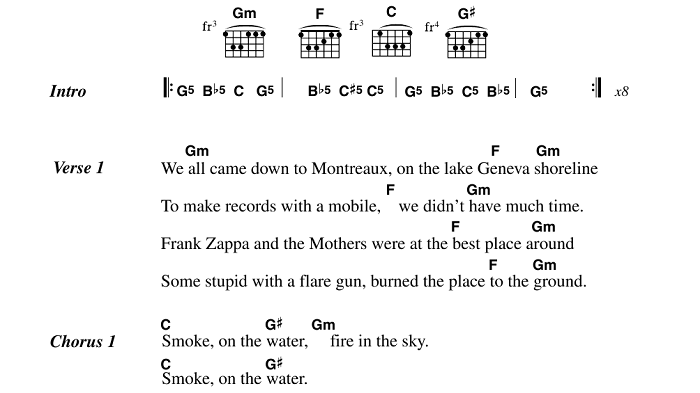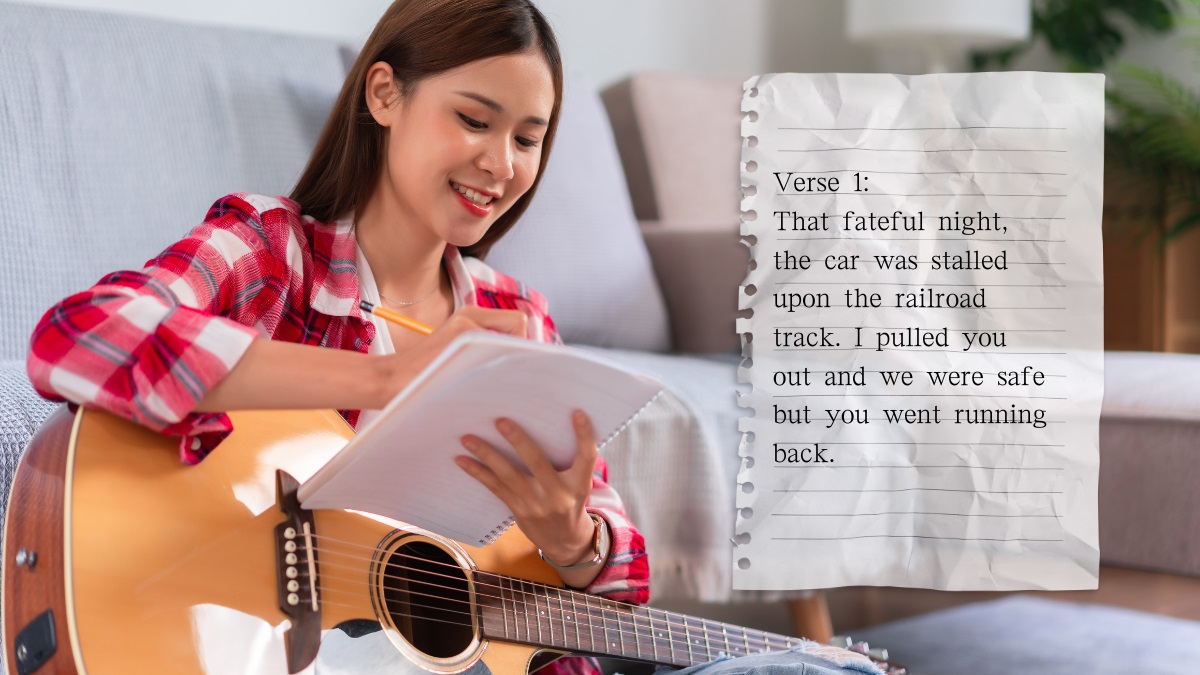Music is the soundtrack of our lives. We all have a favorite song with lyrics that fill us with a range of different emotions. We bet you can sing all the verses of your favorite song, can’t you?
It might be a song that warms your heart and makes you smile; comfortable in the knowledge that you’re not alone in the world.
It might be a song that makes you shake your head and wonder about life or one that makes you recall a distant memory or a favorite person.
Much of the power of songs lies in the verse. It’s the section of music that has the most lyrical and melodic variety. Read on for a thorough overview of what is verse.
What Is a Verse?
A verse is a repeated section of a song that’s used to tell and develop a story, as well as give depth, understanding, and purpose.
The verse is the main section of the song, where the storytelling takes place. Without it, a song becomes repetitive and incomplete.
The Verse Is the Heart of Song
Music audiences everywhere have always loved songs with familiar structures. Most songs typically consist of a combination of a verse, chorus, and bridge, besides sections like the intro, coda, and instrumental solo.
A verse is a series of lyrics that tells the main story of the song and keeps the plot moving forward. It often explores complex stories involving people, places, thoughts, and emotions. It aims to provide the listener with an understanding of the message within the song.
Each verse brings the listener closer to the chorus and to the end of the story. Compared to a chorus section, a verse typically offers a new set of lyrics in each repetition but keeps the same melody.

Usually, verses are similar in length and share a meter or pulse, meaning they move along the same pattern although the words are different.
The music carrying the verse is often used to complement the mood, tone, and rhythm of the music carrying the chorus, which usually contains the signature musical motif.
While some songs may contain only a single verse, most modern songs consist of multiple verses.
You can look at the verse the same way you look at a poetic stanza, seeing as they both consist of rhyming lyrics with an ABAB or AABB rhyme scheme.
What Does a Verse Do?
A verse and chorus complement each other. While a good chorus expresses the main idea or theme of the song and serves as a point of resolution to the verse, a verse creates the musical tension that builds up to the chorus.
Verses serve different purposes in different songs, including:
A Verse Can Tell a Story
A verse supports the overall theme of the song by serving the main purpose of the narrative. The verse has two main roles: emphasize the change happening in a song or expand the main idea emphasized in the chorus. It tells an interesting, continuous story, no matter the melody or rhyme scheme, like in “Lake Marie” or in the Bob Dylan hit, “Tangled Up in Blue.”
A well-written verse builds a sense of anticipation for the rest of the song and deepens our feelings or understanding of the song and its story. In most cases, repeating verses share the same melody and chord progression.
A Verse Can Provide Contrast with the Chorus

Sometimes, verses are created to contrast with their partner choruses.
For example, in Nirvana’s “Lithium,” Kurt Cobain mumbles in the verse but loudly sings a single word—“Yeah”—in the chorus.
In “Complicated,” by Avril Lavigne, a happy verse in the key of F major changes to the sad relative minor key of D minor.
Moreover, sometimes a chorus is sung and made to contrast with a spoken, chanted, or rapped verse, a popular technique used by Lou Reed and Leonard Cohen.
Faith No More’s “Epic” and Red Hot Chili Peppers’ “By The Way” are also excellent examples of the contrast between verses and choruses.
How Long Is a Verse?
There are no hard rules when it comes to length in music theory. However, even-numbered bars are commonly accepted for a musical verse, as opposed to odd-numbered bars that feel incomplete. Typically, the number of bars in a verse of modern music is divisible by eight, so it’s often 8, 16, 24, or 32.
There are several factors that help determine the length of a verse and the number of bars it consists of. So, be sure to keep the following in mind while writing your next verse:
Length of the Chorus
A chorus and verse don’t have to be the same length. A longer verse is often used to give the narrative a chance to develop.
The main thing here is balance. As a general rule, the verse tells what’s happening while the chorus underlines its importance.
If the verse is too long compared to the chorus, the song’s meaning may get lost. Moreover, if the verse is too short and the chorus is too long, the song may lose its value.
Genre, Length, and Tempo of the Song

Most of the time, all verses share the same melody but introduce new song lyrics. However, genre often plays a deciding role in this approach.
For example, rap verses are much longer than pop verses because they give priority to lyrics and storytelling over melody and instrumentation.
Many songs have also become shorter to better suit people’s attention spans. Most pop hits are under four minutes long, and an average song has verses 8–16 bars long.
If you’re writing a shorter song, make sure your verse is short and concise and create a balance between each element of your song.
The difference in tempo speed also decides how long it takes to play each bar. A song with 60 BPM may require shorter verses and take longer to play than a song with 120 BPM even though they share the same number of verses.
What Are the Most Common Verse Forms?
Different forms of verse can help you tell your story, song-wise, in different ways. There are several ways you can structure your verse to achieve different effects.
There are songs where one section is repeated several times with different lyrics, including 12-bar Blues songs (like “Sweet Home Chicago”), and epic tales that tell a long story (like Gordon Lightfoot’s “The Wreck of the Edmund Fitzgerald”).
You could also go for a simple song structure that uses only short verses, to create a concise, heartfelt song, along the lines of the favorite song “When You Wish Upon A Star,” from Walt Disney’s 1940 classic, Pinocchio.
Here are some of the most common verse forms to help you build up your song:
Verse-Chorus

The classic verse-chorus structure that we all know and love works best to emphasize a certain idea throughout a song.
The verse-chorus form is the most commonly used song structure today, making up at least 95% of songs in the charts. In it, the verse and chorus work in tandem, subtly translating into soul-soothing music.
Each verse’s new lyrics help to set up and build into the chorus, where the main idea of the song is expressed. Musically, the verse is much less intense than the rocky chorus, with a lower vocal register, milder texture, quiet dynamics, and simple guitar strumming.
Examples of songs that use this verse structure are “Complicated” by Avril Lavigne, “Smoke On The Water” by Deep Purple, “All You Need Is Love” by The Beatles, and “Foxy Lady” by Jimi Hendrix.
Refrain
The refrain form helps weave a rich narrative with a powerful theme. It resembles a compressed verse-chorus form, but there’s a single verse that ends with one or two repeated lines or phrases that emphasize the main point, called the refrain.
The best example is the favorite song “What a Wonderful World” by Louis Armstrong. Also, “Wake Me Up When September Ends” by Green Day, and “Will You Still Love Me Tomorrow” by the Shirelles, and even the nursery rhyme “London Bridge is Falling Down.”
The refrain is often less intense than the rest of the verse. Refrain forms work great in songs where you want the story to take center-stage. The chorus takes a backseat to add interest while keeping the focus on the verse.
Cumulative Verse

A simple verse structure with a gradual addition so that each song verse is longer than the one before. Typically, the verses are two lines separated by refrains.
There are many cumulative songs that also have a chorus. One of the best-known examples of a cumulative song is “The Twelve Days of Christmas,” and the famous French-Canadian children’s song, “Alouette.”
Who Are the Best Songwriters in the Music Industry?
From the Bee Gees to Missy Elliott and Timbaland to Swedish Abba songwriters Björn Ulvaeus and Benny Andersson who wrote the very successful Broadway musical, “Mamma Mia!,” the songwriting scene has always been bursting with talent.
Famous and very successful songwriters include Tom Hall, who claimed to write songs by osmosis, absorbing everything from Dickens to Hemingway, and Taylor Swift who, despite her young age, has already written careers’ worth of keepers.
John Prine, Billie Joe Armstrong, Paul Westerberg, Eminem, Kris Kristofferson, Sam Cooke, Kanye West, and James Taylor are also songwriters and musicians who enriched all genres of music through their heartfelt words.
5 Key Elements for Writing Good Verse
When writing a song, think about the central theme and articulate it into a foundation to build the chorus. Then, think about the story you want to tell around that theme, and write it down in the verses.
When it comes to songwriting, the sky is your limit. As long as it sounds right and feels balanced, you can choose any combination of verse forms and melodic techniques.
Here are a few pro tips that’ll help you write fantastic verses that’ll lead to solid musical compositions to mesmerize your listeners. Many of these tips are inspired by Usher’s own personal techniques.
1. Make It Balanced

When writing a verse, it’s best to begin with an 8-bar phrase then string along more phrases until you end up with a verse that sounds good for your song.
Create structure for the song, and insert lines if necessary to maintain that structure. Remember that verse is one of the main parts of the larger picture, and pay attention to all elements of your song to make it harmonic.
2. Make It Catchy and Engaging
A catchy starting hook will engage your listeners from the very start of the song, and make it memorable. You may choose to make your first verse in AABA or ABABCB format.
Good examples of that are “September” by Earth Wind & Fire, “Basket Case” by Green Day, and “Under the Bridge” by Red Hot Chili Peppers.
3. Make It Poetic
Borrow from poetic verses and include lines of poetry. You may want to use iambic pentameter to create a special rhythm, by stressing specific syllables in a poetic line.
This technique is widely used in Shakespearean plays and sonnets.
4. Make It Lyrical

You have ample space to express yourself in verse, so let your imagination soar.
Include some poetry and use strong imagery. Use your verse to build up to a chorus with a catchy musical phrase you want to build your song around.
Add to the lyric syncopation, or a type of rhythm, which stresses certain beats, often the weak beats, and then adjust the lyrics accordingly.
Apply a clever rhyme scheme to your verse, changing words at the end of sentences to serve the rhyme if you need to.
You may also choose to go for rhyming couplets that were popular in early American poetry or follow in the footsteps of poets like Walt Whitman who ignored rhyme schemes altogether in their free verse poetry.
5. Make It Innovative and Unique
Don’t be afraid to color outside the lines when writing verse. Let your imagination run wild and mix things up. Embrace the feeling you’re expressing and write down what’s on your mind.







